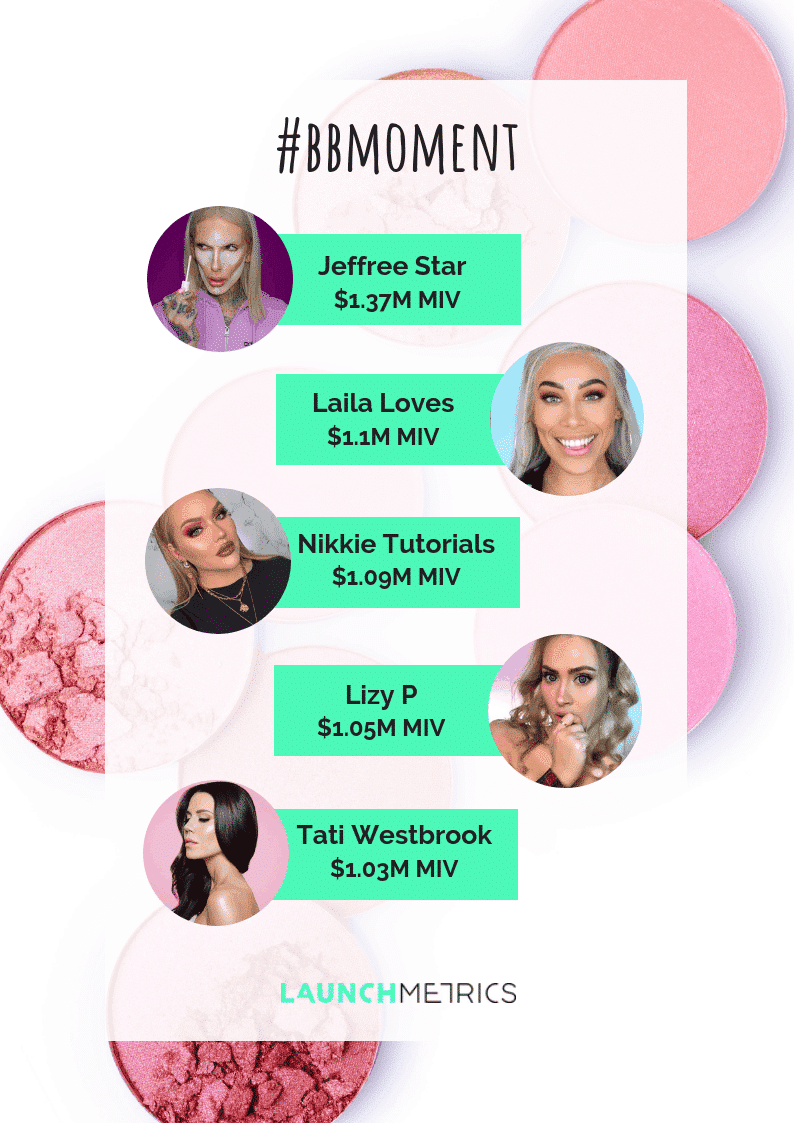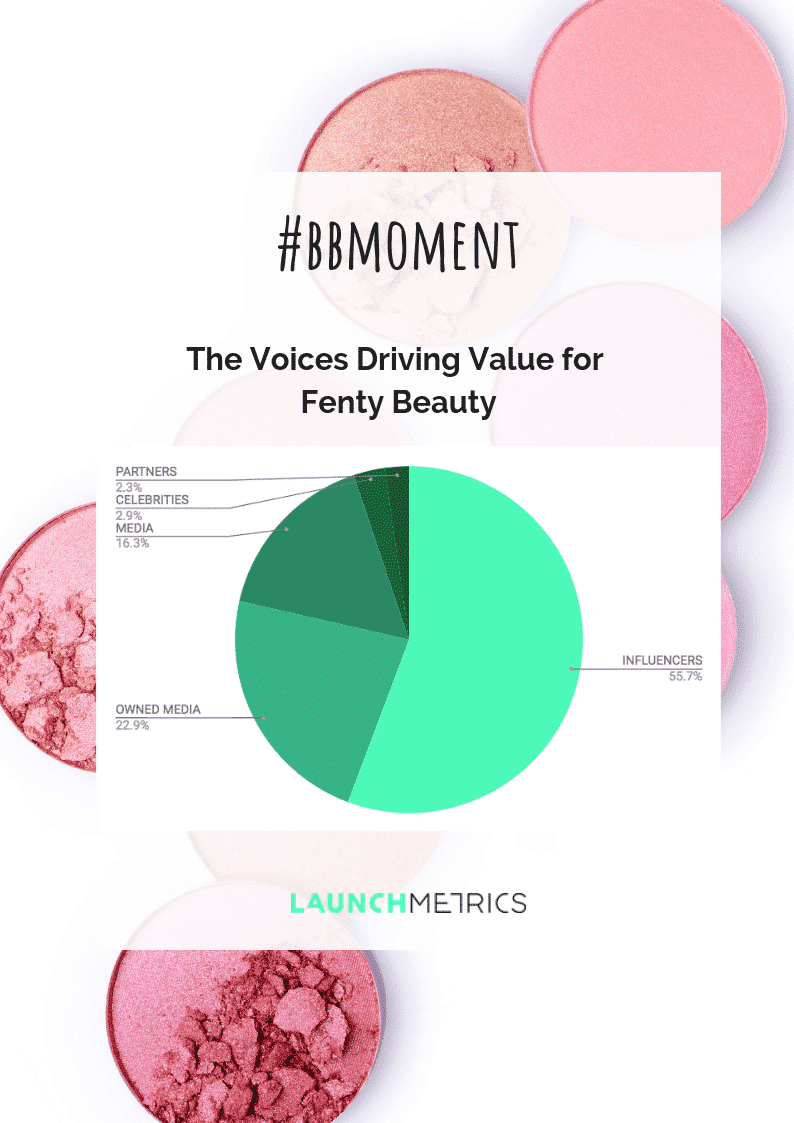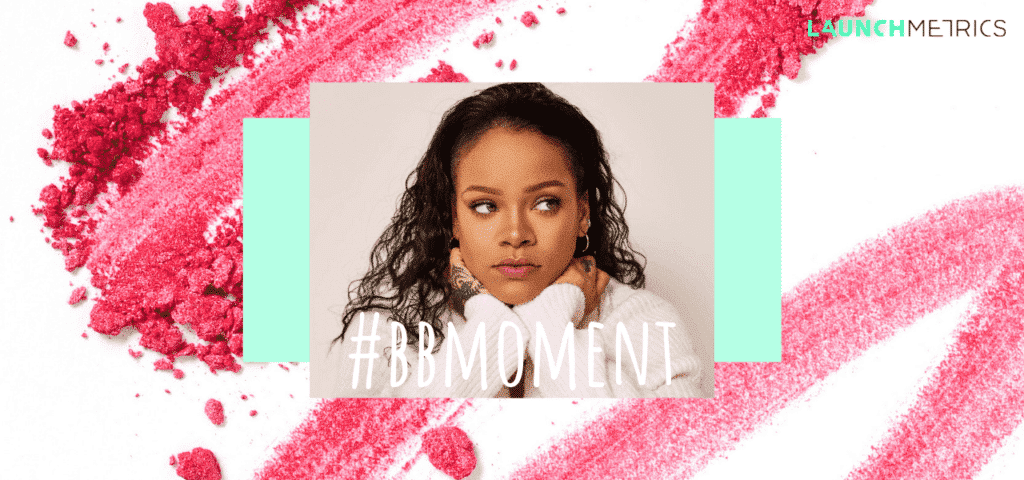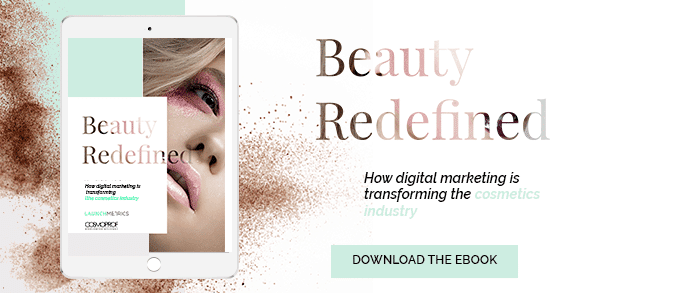In the month of January Fenty Beauty racked up more MIV™ than any other brand in its category.
You might be thinking this is all due to Rihanna. There’s no doubt that a brand owned by an of-the-moment celeb is able to garner immense buzz across online and social media, however, the incredible media impact that Fenty Beauty generated goes far beyond this assumption.
To kick off our new #BBmoment (Beauty Brand Moment) series, our team of data scientists utilized our proprietary Media Impact Value™ algorithm (MIV®) to dig deep into makeup brands’ strategies during the month of January, and for this project specifically benchmarked the following brands: Fenty Beauty, Anastasia Beverly Hills, Too Faced, Urban Decay, NYX, Nars, Laura Mercier, Make Up Forever, Kat Von D and Smashbox.
The common denominator for all of these brands was that each were leveraging influencers successfully and received the most buzz from this Voice. We previously saw in our Beauty Redefined report that the cosmetics industry as a whole creates more media impact through influencers than fashion or luxury. While in beauty, influencers garner over 55% of buzz, in fashion and luxury they only represent 17% and 24% of the share of value respectively.
Although the influencer Voice is the most predominant in the industry, it certainly isn’t the only one brands should be paying attention to. When calculating the MIV that brands generate, the five voices we consider are influencers, celebrities, owned media (the brand’s own accounts), media and partners (retailers, resellers, etc.). And, Fenty Beauty certainly proved to be savvy when investing in each Voice.
How Fenty Beauty Is Winning the Media Impact Race
During the month of January, Fenty Beauty racked up a total MIV of $96.2 million, with Anastasia Beverly Hills and Too Faced following at $72.3 million and $65.4 million respectively. And, as mentioned before, it isn’t just because of Rihanna. This is how they did it:
Working with top-tier influencers
When it comes to building brand notoriety and spreading awareness, All-Star Influencers (those with an audience of 2 million or above) and Mega Influencers (500K to 2 million followers) are the kings and queens of this domain. While lower tier influencers are effective for building trust and converting users, All-Stars and Megas have the ability to create impact around a brand that is unmatched, thanks to their vast audience.
The social media winners that sparked the highest media value for Fenty Beauty were Jeffree Star ($1.37M), Laila Loves ($1.1M), Nikkie Tutorials ($1.09M), Lizy P ($1.05M) and Tati Westbrook ($1.03M). These five expert opinion leaders were the highest contributors to the $53.6M in MIV that Rihanna's brand gained from influencers alone, representing 55.7% of the total share of value. Although Fenty Beauty was the highest MIV earner in January, it's worth noting that it was actually Anastasia Beverly Hills who gained the most MIV from influencers ($68.7M); an astounding 95% of their share of value.

Leveraging their owned media channels
Fenty Beauty has cleverly mastered the use of their owned media (the channels that are run by the brand, including Instagram and YouTube) - leading the pack with $22 million in MIV just from this Voice. From video tutorials with Rihanna herself, to the #rihgram (re-sharing) of user generated content, this beauty brand engages its community across various channels, offering a 360-degree digital experience to its users.
The result of Fenty Beauty's strong owned media strategy translates into 22.9% of the overall share of value, making this Voice the second most impactful for the brand.

Not forgetting the power of traditional media
Another reason why Fenty Beauty left its competitors in the dust is thanks to coverage by online media outlets. At $15.7 million, it received more MIV from traditional media than any other brand in this benchmark; three times more than Nars which was second on the list for strongest media MIV. By leveraging this Voice, Fenty Beauty was able to stand out from other makeup brands who had more influencer-focused strategies. While influencers certainly dominate the Voice mix for beauty brands and help build notoriety, there's no doubt that nurturing the other Voices such as owned media and traditional media also aids brands in making meaningful impact.
Stay tuned for more #BBmoment stats in the coming months. Meanwhile, if you'd like to learn more about the current state of digital marketing in the cosmetics industry, check out our Beauty Redefined report:

